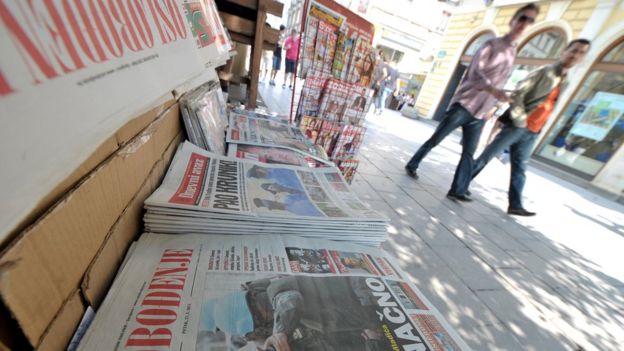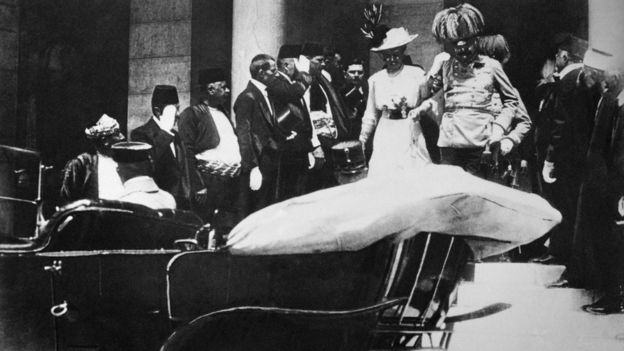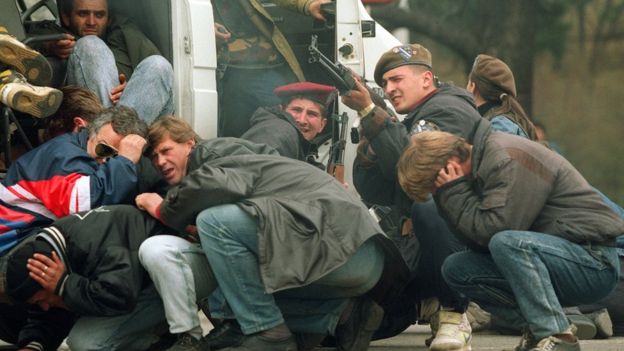Bosnia and Herzegovina – country profile
Bosnia-Herzegovina is recovering from a devastating three-year war which accompanied the break-up of Yugoslavia in the early 1990s.
The 1992-1995 conflict centred on whether Bosnia should stay in the Yugoslav Federation, or whether it should become independent.
It is now an independent state, but under international administration. Its three main ethnic groups are Bosniaks (Bosnian Muslims), Croats and Serbs. The war left Bosnia’s infrastructure and economy in tatters. Around two million people – about half the population – were displaced.
The 1995 Dayton peace agreement set up two separate entities; a Bosniak-Croat Federation of Bosnia and Hercegovina, and the Bosnian Serb Republic, or Republika Srpska, each with its own president, government, parliament, police and other bodies. Overarching these entities is a central Bosnian government and rotating presidency.
In February 2016 the country formally requested to join the European Union.
- Read full overview
- Read more country profiles – Profiles by BBC Monitoring
FACTS
Bosnia and Herzegovina
Capital: Sarajevo
- Population 3.5 million
- Area 51,129 sq km (19,741 sq miles)
- Major languagesBosnian, Croatian and Serbian
- Major religionsChristianity, Islam
- Life expectancy 74 years (men), 79 years (women)
- Currency convertible marka
LEADERS
President: The presidency rotates every eight months between a Serb, a Bosniak (Bosnian Muslim) and a Croat.
The responsibilities of the presidency lie largely in international affairs.
In addition, the Muslim-Croat entity and the Bosnian Serb Republic each have their own presidents.
Prime minister: Denis Zvizdic
 Image copyrightAFP/GETTY IMAGES
Image copyrightAFP/GETTY IMAGESDenis Zvizdic of the Muslim Party of Democratic Action became federal prime minister in February 2015, after the party won the most votes in the October 2014 elections.
A former architecture teacher, born in 1964, Mr Zvizdic set himself the goal of pressing ahead with Bosnia’s aim of joining the European Union, and made significant progress in March when EU foreign ministers approved a long-delayed Stabilisation and Association Agreement.
The prime minister is a long-standing member of the Party of Democratic Action, and served as prime minister of Sarajevo Canton in 2003-2006.
MEDIA
 Image copyrightAFP/GETTY IMAGES
Image copyrightAFP/GETTY IMAGESEthnic divisions and the differences between the entities that make up Bosnia are evident in the media scene, and outlets run by the individual entities are more popular than the state-wide public broadcaster.
TV is the most popular medium. The sector is saturated and commercial outlets operate within a weak advertising market.
Nearly 70% of Bosnians are online. Facebook is the top social media resource.
- Read full media profile
TIMELINE
Some key dates in the history of Bosnia-Herzegovina:
1908 – Bosnia-Herzegovina annexed to Austria-Hungary.
1914 – A Bosnian Serb student, Gavrilo Princip, assassinates the Austrian archduke Franz Ferdinand in Sarajevo. This precipitates the First World War.
 Image copyrightAFP/GETTY IMAGES
Image copyrightAFP/GETTY IMAGES1918 – Austria-Hungary collapses at the end of the war. Bosnia-Herzegovina becomes part of the Kingdom of Serbs, Croats and Slovenes.
1941 – Bosnia-Herzegovina annexed by pro-Hitler Croatian puppet state. Thousands of Serbs, Jews and Gypsies are sent to the death camps.
1945 – Bosnia-Herzegovina liberated following campaign by partisans under Tito.
1945-1991– Bosnia is part of Socialist Federal Republic of Yugoslavia.
 Image copyrightAFP/GETTY IMAGES
Image copyrightAFP/GETTY IMAGES1991 – Following collapse of communism, nationalists win first multi-party elections and form coalition.
1992 – Croat and Muslim nationalists form tactical alliance and outvote Serbs at independence referendum. War breaks out and Serbs quickly assume control of over half the republic.
1992-1995 – Bitter ethnically-rooted civil war involving Bosnian Muslims, Serbs, and Croats. Dayton peace accord signed in 1995 creates two entities of roughly equal size, one for Bosnian Muslims and Croats, the other for Serbs. An international peacekeeping force is deployed.
1996 – The International Criminal Tribunal for the former Yugoslavia begins work in the Hague.
2016 – Former Bosnian Serb leader Radovan Karadzic is convicted of genocide and war crimes for his role in the 1992-1995 war.
- Read full timeline
